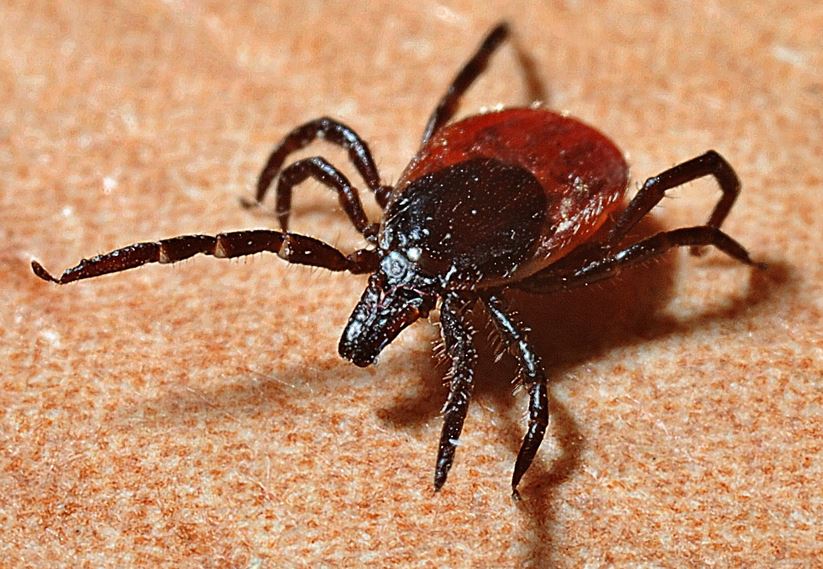“Be tick aware,” said Dr. Paul Roumeliotis, chief medical officer for the Eastern Ontario Health Unit (EOHU), during one of his weekly talks with regional media.
While much of the EOHU’s disease-prevention focus has been on COVID-19, Dr. Roumeliotis noted that the regional health unit also continues to monitor other potential disease situations. During the summer months, especially in August, the risk of getting Lyme disease increases for people who spend much of their time outdoors, working around wooded areas or in pastures with tall grass, or going for walks in the woods.
The Five Counties region, which includes the United Counties of Prescott-Russell and the United Counties of Stormont-Dundas-Glenarry, has been designated “an at-risk area” for Lyme disease in Ontario. The main carrier of the disease is the black-legged tick, also known as the deer tick, which transmits the infection through its bite when it attaches itself to a person and starts sucking blood.
Lyme disease symptoms
The chance of an infected tick passing on Lyme disease increases the longer it is attached to a person. Symptoms of Lyme disease appear within three to 30 days after a tick bite and may be mistaken for flu if they are mild.
Lyme disease symptoms include: fever, headache, muscle and joint pain, muscle spasms, numbness or tingling, facial paralysis, fatigue, swollen glands, and sometimes a spreading rash.
Left untreated, Lyme disease affects the heart, nervous system and joints. It can be treated with antibiotics if diagnosed in its early stage. If any of the symptoms appear, consult a doctor.
Lyme disease prevention
The best way to reduce the risk of Lyme disease is to be careful when outside and avoiding the chance of ticks getting on the skin and starting to feed. Ticks are most active in the summer but can be encountered during spring and fall also when outside temperatures are above freezing.
At home keep lawns mowed short and bushes and tree branches trimmed to allow sunlight because ticks avoid hot and dry areas. Keep the edge of lawns clear of leaf litter, brush and weeds that provide ticks with dark, damp places to dwell.. Keep children’s playsets and sandboxes away from wooded areas.
Wear light-coloured clothing when working outside or going for walks. It makes ticks easier to spot. Wear long-sleeved shirts and pants, socks and regular sneakers, shoes or boots. Tuck the shirt into pants and the pant legs into the socks.
Use insect repellant with DEET or Icaridin on clothes and exposed skin. Shower as soon as possible after being outside to wash off any ticks and also examine legs, arms, head, back and front for any ticks. Put unwashed clothes in a dryer on high heat for 60 minutes to kill any ticks still attached before the clothes go into the laundry.
Got a tick?
Remove a tick as soon as possible. Use a pair of fine-tipped tweezers or a tick removal tool to grasp the tick as close to the skin as possible. Do not use fingers to remove as a tick swollen with blood may just burst and ensure the Lyme disease bacteria gets into the body through the wound.
Do not try to burn with a cigarette or a match head or use nail polish or petroleum jelly to remove the insect. That risks getting the disease bacteria into the open wound. After removing and disposing of any ticks, wash hands with soap and water or use sanitizer.
Anyone with pets that spend time outdoors should check them for ticks lodge in the fur.
More information on dealing with ticks and Lyme disease is on the EOHU website at https://eohu.ca/en/lyme/what-is-lyme-disease.



